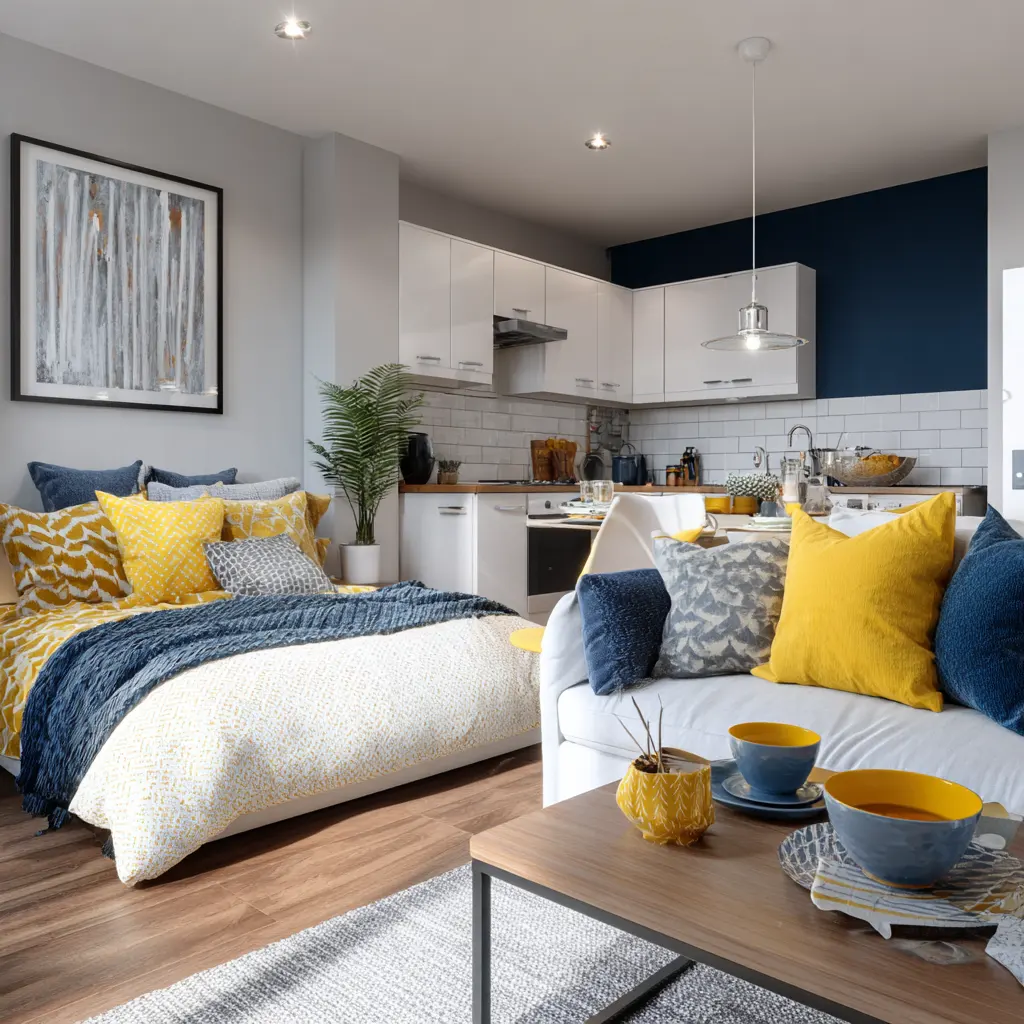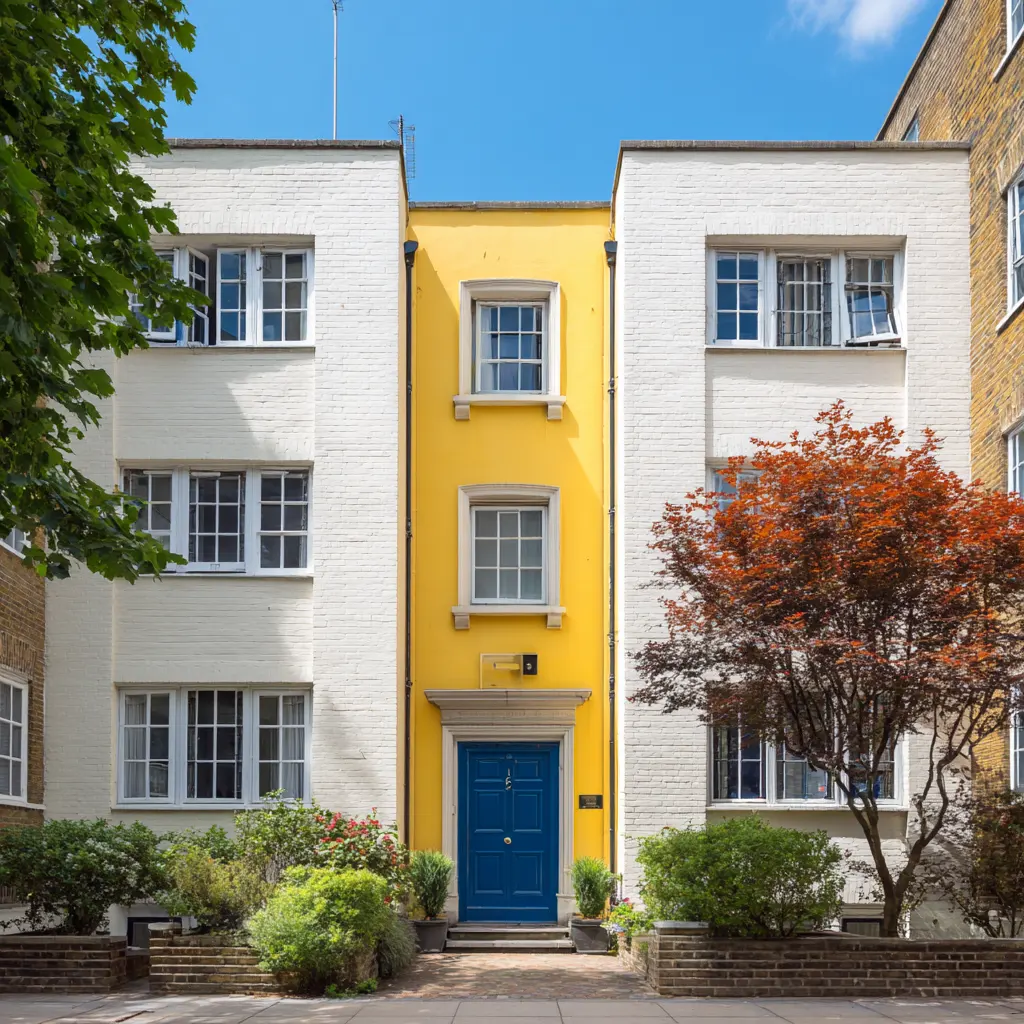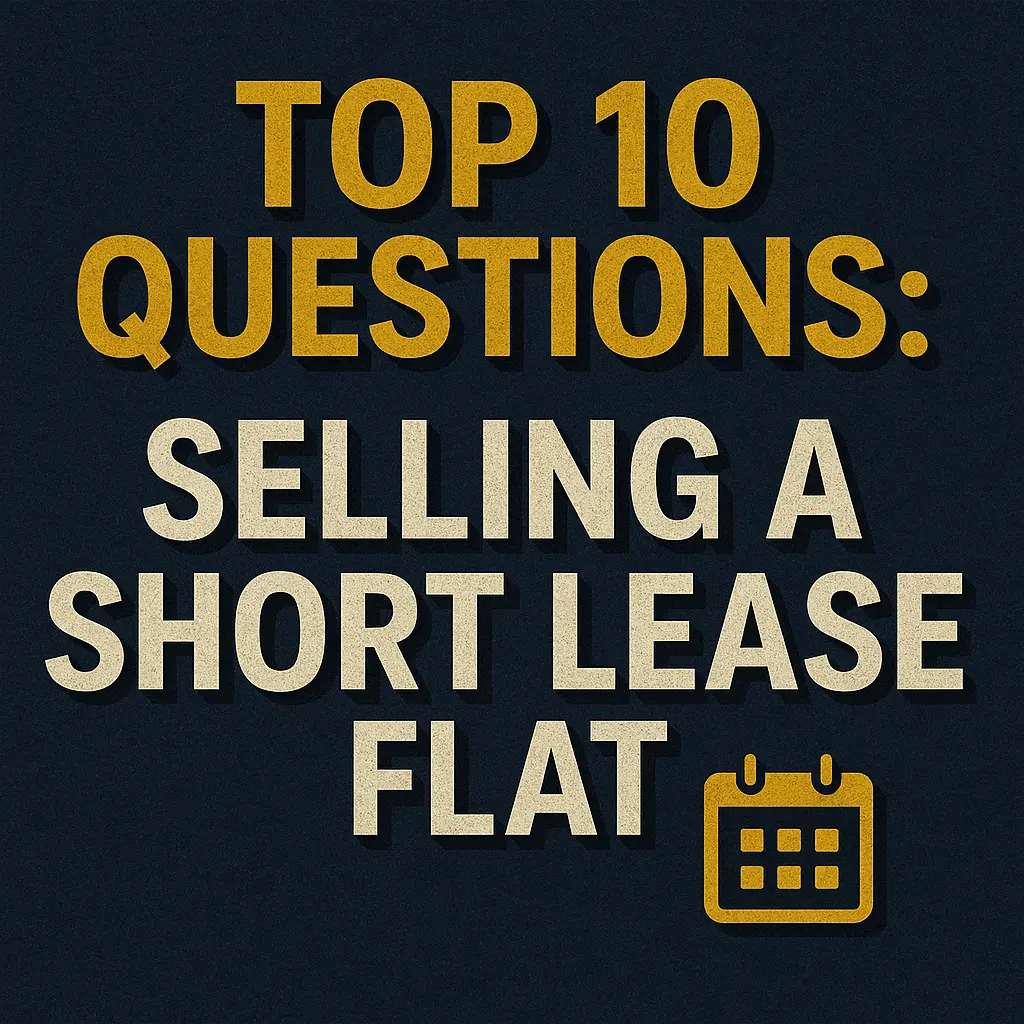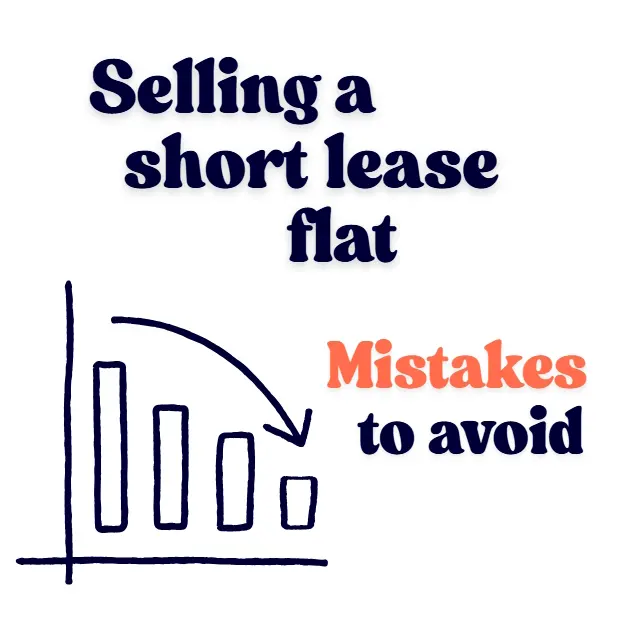Why Selling a Short Lease Studio Flat Is Challenging (and Opportunity-Filled)
Selling a studio flat with a short lease in England or Wales can feel like an uphill battle. These two factors - compact size and diminishing lease length - each carry their own obstacles, and when combined, they can significantly narrow your potential buyer pool.
Studio flats, by nature, appeal to a niche market: single professionals, first-time buyers, or landlords seeking high-yield rentals. However, when the flat also comes with a short lease - typically under 80 years - it becomes much harder to sell through traditional channels. Many buyers, especially those relying on a mortgage, are unable or unwilling to consider such properties due to lender restrictions and perceived legal complexities.
That said, there is opportunity in this challenge. Short lease studio flats are among the most affordable properties in the market, and their low entry price often attracts seasoned cash investors or landlords looking for strong rental returns. If you're prepared and understand your options, you can still achieve a fair outcome without unnecessary delays or stress.
This article will walk you through what to expect, explore your selling options, highlight the legal and financial considerations unique to short lease studio flats, and share tips to help you navigate the process successfully.
What Is a Short Lease?
A lease is a legal agreement giving you the right to occupy your flat for a set period. In the UK, a "short lease" typically means a lease with fewer than 80 years remaining. Once a lease drops below this threshold, the cost of extending it increases significantly due to what's known as "marriage value" - the additional value created when the lease is extended. This value must be shared with the freeholder, increasing your costs substantially.
For studio flats, short leases can have an even more pronounced effect. Because studio flats already have lower market values due to their size, a short lease can represent a larger percentage discount compared to larger flats. This can make studio flats with short leases appear attractively priced, but it can also deter traditional buyers who worry about future resale difficulty and additional extension costs.
Lenders also become more cautious when a lease is short, which reduces the pool of potential buyers significantly - particularly when the flat is small, leasehold, and under 70 years remaining.
Helpful Tip: Use the gov.uk website or ask a solicitor to confirm the exact number of years left on your lease before proceeding. A leasehold management company can also provide the official lease term if you don’t have the original agreement.
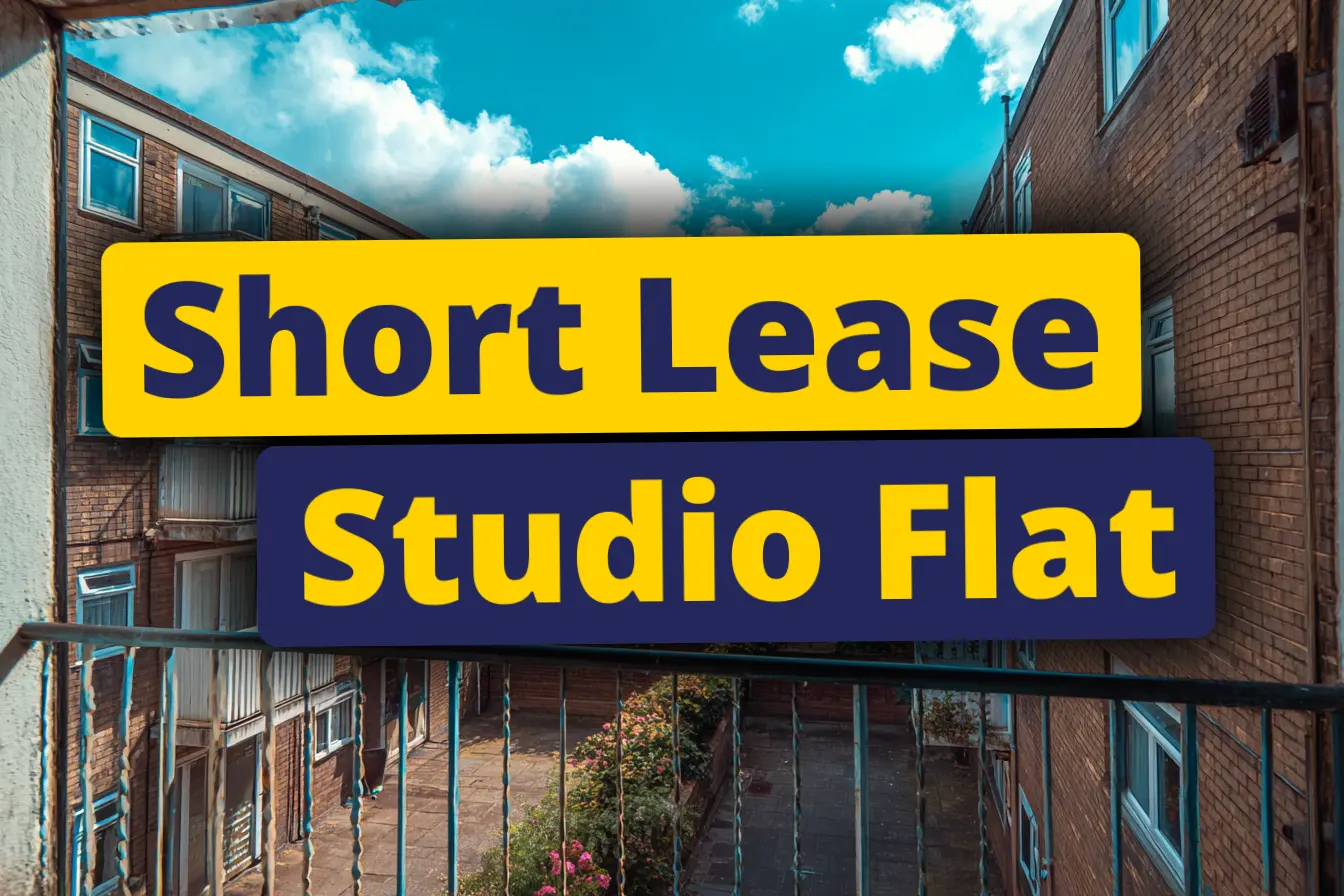
Why Studio Flats Are Already a Niche Market
Studio flats appeal to a limited audience due to their compact size and unconventional layout. Most studio flats are open-plan, with living, sleeping, and kitchen areas all within a single room. This can be ideal for single professionals or students, but may not suit couples, families, or buyers looking for long-term flexibility.
From a lender's perspective, the size and layout of studio flats often raise concerns. Many mortgage providers have minimum square footage requirements - commonly 30m² or more - and prefer properties that have at least one separate bedroom. This means that even a studio with a long lease might be rejected for lending based on its layout alone.
Furthermore, studio flats are typically entry-level properties. They tend to attract first-time buyers or individuals with lower budgets - demographics that are more likely to rely on mortgage financing. When a short lease is added into the mix, these buyers are often priced out or put off entirely due to the perceived legal and financial risks.
However, studio flats can be attractive to a different type of buyer: cash investors and landlords. Their lower price point means better potential for strong rental yields, especially in high-demand urban areas. But this appeal comes with a caveat - investors expect a discount to reflect the lease situation, and may negotiate hard.
Helpful Tip: Flats under 30m² are often considered "unmortgageable" by mainstream lenders. This further limits your buyer pool to investors and cash buyers, so be prepared to position your flat accordingly in the market.
Selling Challenges
This section highlights some of the key challenges involved in selling a short lease studio flat. From valuation difficulties and mortgage restrictions to a limited pool of buyers, it’s important to understand the hurdles you may face - and how to overcome them.
Why Short Leases Devalue Your Property
Short leases reduce a property’s value significantly. The shorter the lease, the greater the reduction - especially once it drops below the critical 80-year threshold. This is largely due to the looming cost of a lease extension, which buyers will eventually need to cover. Buyers often subtract that anticipated cost, along with a buffer for inconvenience and legal uncertainty, directly from their offer.
For studio flats, the impact can be even more severe. Studio flats are typically at the lower end of the price spectrum, so a lease-related discount represents a larger percentage of the total value. For example, a £20,000 deduction on a £200,000 one-bedroom flat might be manageable - but on a £140,000 studio, it’s a much greater blow to the final sale price.
The combination of compact size and lease concerns can also raise red flags for mortgage lenders, who may already be hesitant to lend on studios. That means a short lease can effectively limit your buyer pool to cash buyers only. As a result, the property becomes harder to sell and often remains on the market longer, particularly if not priced competitively.
Helpful Tip: Buyers often deduct the full cost of a future lease extension (and then some) from their offer - especially when the property is a studio flat with limited mainstream appeal.
How Short Is Too Short? (Key Lease Length Thresholds)
Understanding the critical points at which a lease becomes problematic can help you anticipate buyer objections and price your studio flat accordingly. Here are the key thresholds to know:
80 years: Threshold where marriage value kicks in. This is the point at which extending the lease becomes significantly more expensive.
70 years: Many lenders start pulling back. Mortgage availability becomes more limited, particularly when combined with small floor area, as seen in most studio flats.
60 years: Often unmortgageable. Most mainstream lenders will not provide financing below this level, pushing your flat into cash buyer territory. At this stage, expect buyers to negotiate hard.
50 years or less: Valuation becomes highly subjective. These flats are usually only bought by seasoned investors or developers who specialise in lease extensions or refurbishment opportunities.
Because studio flats are already niche and commonly on the lower end of the price scale, any lease-related issue has a magnified effect. Buyers often perceive a short lease as a problem that outweighs the affordability advantage, unless they are highly experienced.
Helpful Tip: A lease under 70 years usually rules out buyers who need a mortgage - and for studio flats under 30m², even a longer lease may not be enough to secure lending.
Who Will Buy a Short Lease Studio Flat?
These buyers understand the risks and costs involved, but they will expect a significant discount in return. Studio flats often appeal to landlords and investors because of their affordability and strong rental demand in city centres or university towns. A compact footprint means low maintenance, and a short lease may not deter buyers who are looking to hold the property long term and can manage the lease extension process themselves.
In fact, for some investors, a short lease can present an opportunity to buy low, extend the lease, and resell at a profit - especially in high-demand locations. Similarly, landlords might be drawn to the strong rental yield that a studio flat offers, even when lease complications are factored in.
Helpful Tip: If you can find a buyer who understands the lease extension process - and sees potential in your flat as an investment - they may be more flexible on timing and conditions, making the sale smoother overall.
Mortgage Restrictions on Studio Flats with Short Leases
Most high-street lenders will not lend on:
Studio flats often fall into multiple risk categories for lenders, especially when combined with a short lease. Their compact size, open-plan design, and perceived lack of long-term suitability make them less attractive to mainstream mortgage providers. Even if the flat has a longer lease, its size alone may disqualify it from lending criteria used by banks and building societies.
When you add a short lease into the equation, the flat becomes even more difficult to finance. Buyers who rely on a mortgage - particularly first-time buyers - may be unable to proceed, leading to delays or collapsed sales. This forces many sellers to focus exclusively on cash buyers or specialist investors, who tend to negotiate more aggressively on price.
Helpful Tip: Highlighting the flat's rental yield, local demand, and potential for lease extension may appeal more to investors than trying to market it to traditional mortgage-backed buyers.
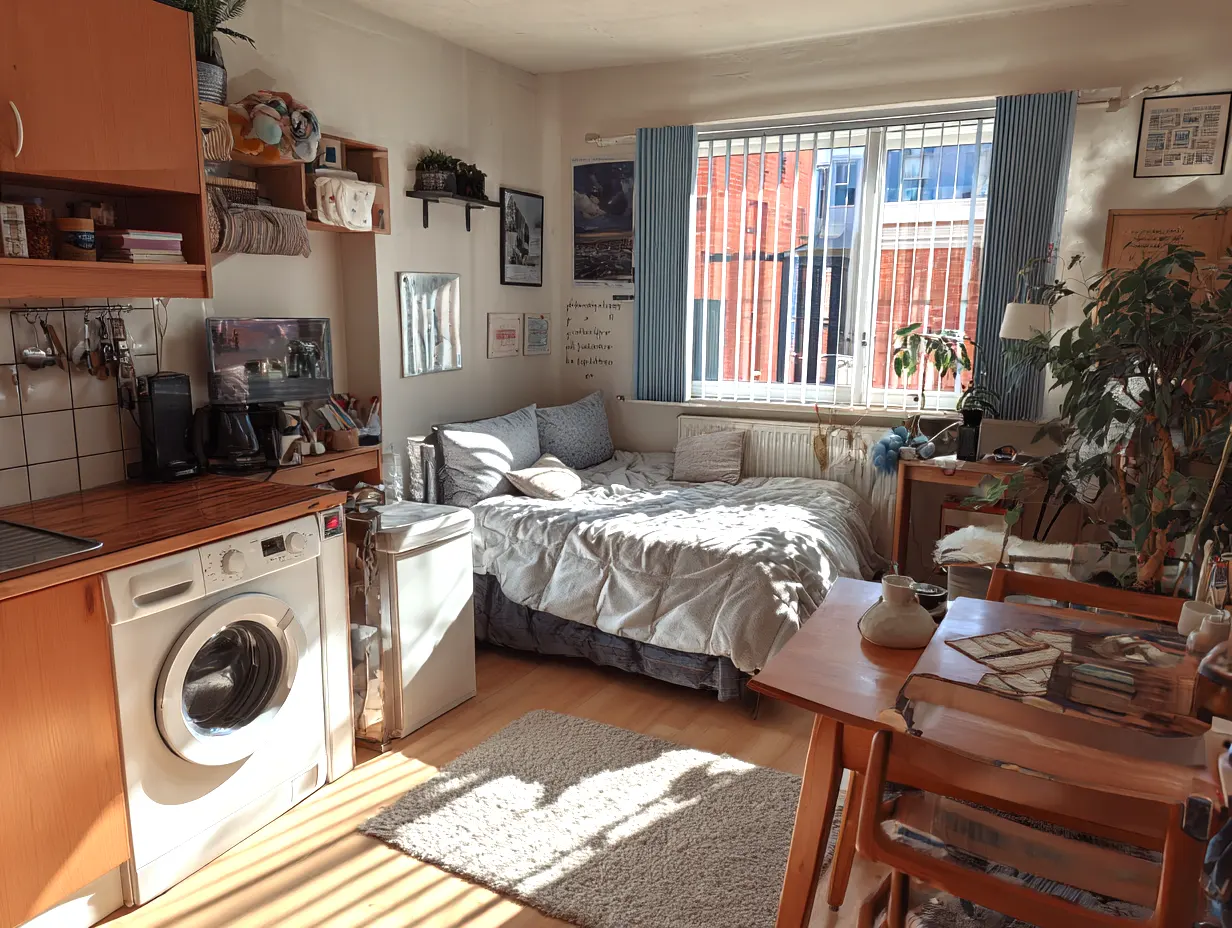
Improving Saleability
This section explores practical steps you can take to make your short lease studio flat more appealing to buyers. From lease extension strategies to pricing advice and presentation tips, these improvements can significantly increase your chances of securing a successful sale.
Should You Extend the Lease Before Selling?
Pros:
Increases property value
Opens up sale to mortgage buyers
Broadens your potential buyer pool
Reduces the risk of sales falling through due to lease concerns
Cons:
Extending the lease before selling can still enhance your studio flat’s appeal, but the benefits may be more limited compared to larger flats. Many studio flats (especially those under 30m²) are already deemed unmortgageable by mainstream lenders, regardless of lease length. This means that extending the lease may not open the door to mortgage-backed buyers in the way it might for a one-bedroom flat. Instead, the main benefit lies in increasing perceived value and offering long-term security to cash buyers and investors, rather than attracting a broader buyer pool.
As of January 2025, the two-year ownership rule for lease extension eligibility has been abolished. This change allows both new and existing owners to begin the lease extension process immediately, which can be particularly useful if you're preparing to sell soon and want to increase your flat's appeal.
Keep in mind that extending the lease takes time and money, and not every seller is in a position to manage this. However, in a competitive market, it can mean the difference between multiple offers and a stagnant listing.
Helpful Tip: Always get a formal quote for lease extension costs before making a decision. A surveyor or specialist solicitor can help you weigh up the likely return on investment.
Assigning a Section 42 Notice to the Buyer
A Section 42 notice is a legal way to formally start the lease extension process. Once this notice is served to the freeholder, it gives the current owner (or their buyer) the right to extend the lease under statutory terms. Importantly, this right can be assigned to the buyer during the sale, allowing them to continue the lease extension process without restarting the legal timeline.
Even though the two-year ownership rule was abolished in January 2025, serving a Section 42 notice before the sale can still be a strategic move. It provides clarity on the timeline and creates a legally binding route for the lease extension that gives buyers more certainty and control. For studio flats, where buyers may already have reservations due to size or mortgageability, anything that reduces perceived risk can make a big difference.
By assigning the Section 42 notice, sellers can avoid the upfront cost of completing a lease extension, while still offering a valuable benefit to prospective buyers.
Helpful Tip: This can make your property more attractive without the upfront cost of extending the lease yourself - and may help secure a quicker or higher offer.
Getting a Professional Valuation for a Short Lease Flat
Hire a RICS-registered surveyor with leasehold experience. A professional valuation is essential to help you set the right asking price and avoid surprises later in the sale process. The surveyor will assess several key factors, including:
Current lease length
Ground rent terms and escalation clauses
Comparable sales data from similar flats (especially other studios)
Estimated cost to extend the lease
Local market conditions
When valuing a studio flat, additional factors like overall size, internal layout, natural light, storage space, and even the floor level can all influence the final figure. Due to the compact nature of studios, small differences in usability can have a surprisingly large effect on perceived value. The surveyor will take these into account when arriving at a valuation.
It’s also worth noting that some studio flats fall below the typical 30m² threshold, which may already make them less appealing to mortgage-backed buyers. The valuation will reflect this, particularly when combined with a short lease, as the audience becomes increasingly niche and price-sensitive.
Helpful Tip: Use this valuation to set a realistic asking price and avoid sales falling through later. A valuation that considers both the lease and studio layout will help you target the right buyers from the outset.
How to Price a Short Lease Studio Flat to Attract Buyers
Research recent sales of similar short lease flats
Factor in lease extension costs
Set a competitive price for cash buyers
Studio flats already have a ceiling in price per square metre, so pricing competitively is essential. Unlike larger flats, studios appeal to a narrower range of buyers - often those with tighter budgets or landlords seeking high rental yields. Because of this, even modest pricing errors can lead to reduced interest, prolonged time on the market, or repeated price drops.
When pricing a short lease studio, consider obtaining two valuations: one for the flat with its current lease length, and one that includes the estimated value after a lease extension. This allows you to see the potential uplift and helps position your asking price realistically. Buyers will almost certainly deduct the full lease extension cost - and possibly more - from their offer. Being upfront about this gives you a stronger foundation to negotiate.
Helpful Tip: Pricing too high is a common mistake. Be honest with yourself about market limitations and remember that the right pricing strategy can make all the difference in securing a quicker sale.
Marketing and Selling
This section looks at how to effectively market and sell a short lease studio flat. From choosing the right messaging to targeting the appropriate buyer audience and working with experienced agents, we’ll explore what you can do to improve visibility and increase your chances of a successful sale.
How to Market a Short Lease Studio Flat Effectively
Be transparent about the lease length
Emphasise yield potential
Use phrases like "cash buyers only" or "priced for lease extension"
Effective marketing starts with setting realistic expectations. Make sure your listing is clear and upfront about the short lease status and studio layout. Highlight the strengths of the property - such as strong rental yields, affordability, and location benefits - particularly in high-demand urban areas. Emphasising potential rental income can be especially persuasive for investor buyers.
Also consider tailoring your listing to appeal to specific buyer groups, like landlords or developers, by using language they respond to. Studio flats often rent well, especially in city centres - this should be highlighted as a selling point. Mentioning proximity to transport links, universities, or large employers can help the property stand out.
Professional photography, a detailed floor plan, and mention of the lease extension cost (if available) will also help build trust and pre-qualify enquiries.
Helpful Tip: Include lease extension quotes in the listing to reassure buyers. If you've already served a Section 42 notice, make this prominent as it adds value and saves buyers time.
Using Estate Agents Experienced in Short Lease Sales
Choose agents who:
Selling a short lease studio flat is not a typical estate agency job. It requires an agent who is well-versed in the added complications of leasehold properties, and who can clearly communicate the flat’s value proposition to a niche buyer group - usually cash buyers or professional landlords. These agents should have strong networks of investor contacts and know how to position the flat in a way that highlights its investment appeal.
Additionally, marketing a studio flat requires a different approach than marketing larger homes. The agent should know how to present the compact space attractively - emphasising features like clever storage, natural light, or location benefits - and understand how to manage buyer expectations around space and layout.
Helpful Tip: Ask for examples of similar short lease flats they’ve sold before hiring an agent. The right agent should be able to speak confidently about marketing strategy, typical timelines, and what kind of buyers are likely to be interested in your property.
Preparing Your Studio Flat for Sale
Preparing a studio flat for sale requires a focus on maximising space and making the property feel as light, clean, and functional as possible. Because studios are compact by nature, buyers will pay close attention to how well the space is laid out and presented. Even small details - like fresh paint, working light fixtures, or well-placed furniture - can make a big difference in how appealing the flat feels.
If you have bulky or excess furniture, consider removing it before viewings to open up the space. Clever staging techniques - such as mirrors to increase the sense of space, or soft furnishings to add warmth - can help viewers see the flat’s full potential. A well-presented studio can overcome initial size concerns and stand out in a crowded market.
Helpful Tip: A clean, well-lit studio looks significantly more appealing to potential buyers. Small touches like fresh towels in the bathroom, neutral décor, and good airflow can subtly enhance the overall impression.
What Documents You’ll Need to Sell a Short Lease Property
Lease agreement
Management pack (from freeholder or managing agent)
EPC (Energy Performance Certificate)
Ground rent and service charge statements
Section 42 notice (if applicable)
Lease extension valuation (if available)
Building insurance details (often required in leasehold sales)
Fire safety or EWS1 certificate (especially for flats in buildings with cladding)
Selling a short lease studio flat involves a higher level of scrutiny during the conveyancing process. Buyers and their solicitors will want reassurance that all leasehold documentation is in order and that there are no unexpected costs or legal barriers.
Delays frequently occur when sellers do not have their paperwork ready, particularly the management pack, which must be requested from the freeholder or managing agent and can take several weeks to arrive. Gathering and organising these documents before listing the property can help prevent hold-ups and demonstrate to buyers that you are prepared and serious.
Helpful Tip: Leasehold sales can collapse due to missing paperwork. Gather everything early - ideally before you list the property - to avoid losing serious buyers.
Money, Timing & Legalities
This section outlines the key financial, legal, and timing-related considerations when selling a short lease studio flat. From typical costs and legal processes to how long the sale might take and what factors can cause delays, it’s important to understand the full picture so you can plan accordingly and avoid common pitfalls.
Typical Costs Involved in Selling a Short Lease Flat
Selling a short lease studio flat comes with several costs - some predictable, others less so. Being aware of these from the outset can help you budget more accurately and avoid surprises:
Estate agent fees: £2,000–£5,000 (or more, depending on sale price and commission structure)
Solicitor fees: £1,000–£2,000 for handling the legal work of a leasehold sale
Lease extension (optional): £10,000–£25,000+, depending on the remaining lease length, ground rent terms, and flat value
Management pack: £300–£600, payable to the freeholder or managing agent
Valuation or surveyor fees: £300–£1,000 if you need a professional lease extension valuation
Marketing or staging costs (optional): Professional photography, staging furniture, or cleaning services might add £100–£500
If your building has unresolved cladding issues or fire safety concerns, there may also be costs associated with obtaining an EWS1 form or contributing to remediation works - issues that can derail or delay a sale if not addressed.
Helpful Tip: Some cash-buying companies will cover legal fees or management pack costs as part of the deal. Always ask what’s included before accepting an offer.
Legal Process and Timescale for Selling
Selling a short lease studio flat involves multiple stages, some of which can be more complex than a standard property transaction. The legal process includes preparing documentation, buyer due diligence, and the exchange of contracts, all of which can be impacted by leasehold-specific factors.
Typical timeline:
8–16 weeks for a standard leasehold sale
Longer if lease extension or complex legal issues arise, such as cladding, absent freeholders, or service charge disputes
Delays often come from:
Waiting for the management pack (which can take 4–6 weeks or more)
Buyer mortgage approval (if applicable, and particularly difficult with short leases and small floor area)
Lease extension negotiations or assigning a Section 42 notice
Additional legal review of lease terms, ground rent clauses, and building safety compliance (e.g. fire risk or EWS1 requirements)
Studio flats can take longer to sell if priced incorrectly, or if the buyer encounters lending restrictions due to size or lease conditions. Legal complications are common in leasehold sales and may be exacerbated by studio flats in older or converted buildings.
Helpful Tip: Consider auction or direct sale routes if speed is critical. These alternatives can bypass mortgage issues and reduce the risk of sales falling through late in the process.
How Much Will You Lose (or Gain) by Selling As-Is?
Selling a short lease studio flat involves weighing up whether to invest in a lease extension before listing or to sell it as-is at a discounted price. The right decision will depend on your financial position, how quickly you need to sell, and the current appetite of cash buyers in your area.
Example 1: Sell As-Is
Market value (with long lease): £200,000
Value with 60-year lease: £160,000
Likely buyer: cash investor
Timeline: faster sale but reduced proceeds
Example 2: Extend Lease Before Sale
Cost to extend: £20,000
Sale price post-extension: £200,000
Net gain: £20,000 (but longer timeline, upfront cost required)
Likely buyer: broader audience including mortgage buyers
You may also want to consider a hybrid approach - begin the lease extension process (e.g. serve a Section 42 notice), then market the flat with the benefit of this notice assigned to the buyer. This can increase perceived value without requiring you to fund the extension upfront.
Helpful Tip: Always compare both scenarios before deciding. Speak with a lease extension specialist or estate agent familiar with your local market to understand which route is likely to yield the best net return in your circumstances.
What Buyers Are Thinking – And How to Address Their Concerns
Buyers worry about:
Resale value and long-term viability
Lease extension hassle and associated costs
Mortgage ineligibility due to lease length or flat size
These concerns are valid, especially for buyers unfamiliar with leasehold law or new to the studio flat market. Many buyers will be cautious of taking on a property that might be difficult to resell or remortgage later, even if it's priced attractively.
You can help address these concerns by:
Providing lease extension quotes from a RICS surveyor or solicitor so buyers understand the financial implications
Assigning a Section 42 notice so buyers don’t need to wait to extend the lease post-purchase
Offering a discount that realistically reflects the short lease and size-related lending risks
Studio buyers may also have lifestyle concerns - worrying that the flat will feel too cramped or lack future flexibility. To overcome this, highlight the property’s convenience (such as location near transport or employment hubs), affordability, and rental potential for future tenants or resale to landlords.
Helpful Tip: The more clarity and information you provide upfront - including documents, valuations, and lease details - the more confidence buyers will have in making an offer.
Is Selling Now the Right Move? Or Should You Hold and Extend?
Ask yourself:
Can I afford the lease extension?
Am I in a rush to sell?
Will the market support a higher price after extending?
Is there strong rental demand in my area if I decide to hold?
Deciding whether to sell your short lease studio flat now or extend and hold requires a balance of financial planning and market awareness. If your property is in a desirable location with strong rental demand, holding onto it and extending the lease could increase your long-term return - particularly if you're not under immediate pressure to sell. Studio flats in central urban areas often benefit from high rental yields, which may allow you to recoup the lease extension cost over time.
On the other hand, if you’re aiming for a clean, hassle-free exit and the lease is severely short, selling now - even at a discount - might make more sense. A shorter lease generally means a lower sale price, but it also reduces the time and complexity involved.
In many cases, beginning the lease extension process and assigning the benefit to a buyer offers a middle-ground solution: it makes your property more attractive without requiring you to fund the full extension upfront.
Helpful Tip: A professional consultation with a leasehold specialist or local estate agent can help you assess the best option based on current market conditions and your personal goals.
Next Steps
Selling a short lease studio flat isn’t easy, but it’s far from impossible. By understanding the challenges, preparing thoroughly, and choosing the right route to market, you can achieve a fair outcome. Studio flats are in demand for the right buyer - especially in urban areas - so it’s about aligning the sale with the right expectations.
Whether you’re trying to offload an investment property, downsize, or release equity, being proactive is key. Short leases and compact layouts create challenges, but they also present opportunities - particularly for cash buyers and investors. The more you can do to prepare and anticipate buyer concerns, the smoother the transaction is likely to be.
Next Steps:
Get a lease extension quote from a qualified surveyor or solicitor
Gather all key documents, including the lease, management pack, and EPC
Speak to an estate agent, auctioneer, or direct buyer experienced in short lease and studio flat sales
Consider your timeline and whether a lease extension or Section 42 notice would improve your outcome
Helpful Tip: If you've had a failed sale or feel stuck, consider exploring auction or direct sale options for a faster, more reliable outcome. These routes can bypass many of the delays associated with traditional estate agent sales.
About Us: We help people sell flats in challenging situations - whether it's a short lease, failed private sales, or you just want a faster, simpler route. We buy flats directly (especially in London) and can also help you sell through auction with expert guidance on your options.
Our service is ideal for sellers who are:
Struggling to find a buyer due to lease length or mortgage restrictions
Under time pressure to complete a sale quickly
Living abroad and looking for a reliable, hands-off process
Tired of sales falling through in the traditional estate agency system
We provide honest advice and clear options. Whether you're leaning toward a direct cash sale or curious about using auction to reach the right buyers, we're here to help you navigate the best path forward - without pressure or over-promising.
FAQ's: Selling a Short Lease Studio Flat
1. Can I sell my flat if the lease is under 70 years?
Yes, but it will likely limit your buyer pool to cash buyers or investors, as most lenders won’t finance flats with leases under 70 years - especially if the property is also a studio.
2. Is it worth extending the lease before selling?
It depends on your goals. Extending can increase value and attract mortgage buyers, but it involves upfront costs and time. A middle-ground option is to serve a Section 42 notice and assign it to the buyer.
3. How much does a lease extension cost?
Costs typically range from £10,000–£25,000+, depending on the remaining lease length, ground rent terms, and the flat’s value. Studio flats may see a proportionally higher impact on value from lease changes.
4. Will a studio flat under 30m² affect my ability to sell?
Yes. Many lenders won’t finance properties under 30m², regardless of lease length. This makes the flat harder to sell to mortgage buyers and usually limits you to cash buyers.
5. Who is most likely to buy my flat?
Cash buyers, buy-to-let landlords, and property investors are your most likely buyers. They understand the risks but will expect a discounted price to reflect the lease and studio layout.
6. Can I use auction to sell a short lease studio flat?
Yes. Auction can be a good route for selling niche or hard-to-finance properties. It’s faster and tends to attract the kind of buyers comfortable with leasehold complexities and smaller flats.
7. What documents do I need to prepare before selling?
Key documents include the lease agreement, management pack, EPC, ground rent and service charge statements, and - if applicable - a Section 42 notice or lease extension quote.
8. How long does it take to sell a short lease flat?
Typically 8–16 weeks, but it can take longer due to leasehold complexities. Waiting on the management pack or resolving legal issues can add further delays.
9. Should I stage or renovate my studio flat before selling?
Yes. Even small improvements - like decluttering, painting, and professional photos—can make a big impact in a compact space and help offset concerns about size or lease length.
10. What’s the best way to price a short lease studio flat?
Base your price on comparable sales, deduct realistic lease extension costs, and target investor expectations. Overpricing can lead to a stagnant listing, especially in this niche market.
